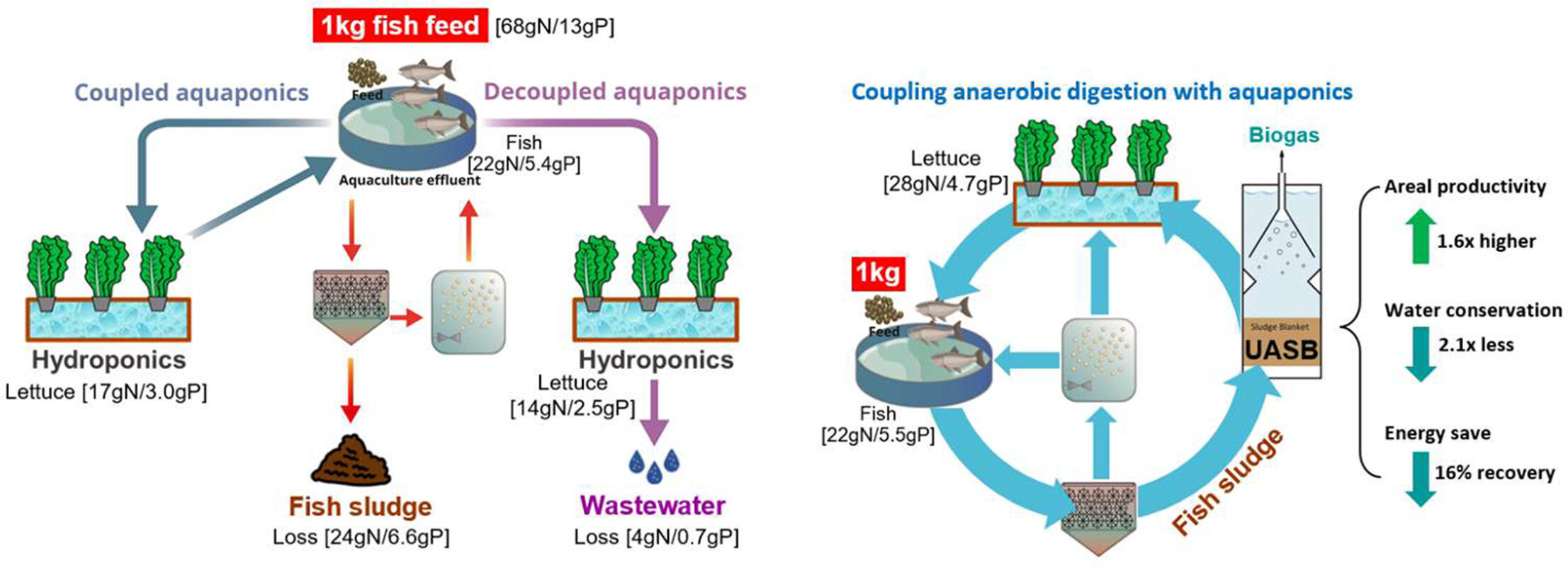It’s a shame only the introduction is available, I was interested in reading the whole paper.
Edit: if anyone wants to read it, there’s the full pdf available if you search the title on Google scholar.
If I were building these, I would make several medium/small size systems, with different crops and fish. such that in event of a failure not all systems would break down.
When dealing with fish, a bigger system with more water is usually more stable.
I like this idea in concept. However in most cases failure is mostly due to power loss. So unless these seprate systems have different power sources it might not protect from catastrophy that much.
As some one who does aquaponics at home. Here are some things ive learned which you might consider.
- There is a minimum physical footprint that these systems use, especially if you are trying to conserve power. So it might make more sense to max out those systems in that minimum footprint.
- Different fish can have very different temperature and pH requirements.
- The pH and temp that the fish like isn’t always what a plant wants.
- some fish have much greater ranges of pH and temp requirements than others.
- if indoors, it’s easy for a pest to establish. Like aphids will trive without ladybugs or green lacewings.
- Vegetables grown in aquaponic systems simply do not taste as good as vegetables grown in soil. Often they are lacking flavor.
- something about the water in an aquaponic system is excellent for propagation from plant cuttings.
For these reasons, I use aquaponics more as a backup and complimentary grow system to my no till regenative garden. Having an indoor system is great in the winter if you want leafy greens or to proprpgate trees for the next season.
Decentralized agriculture
I would make it big and use just one crop and one kind of fish, and then crossbreed the crop with the fish so they share genes but have better yield and can be eliminated by a single virus popping up and killing it all
We gotta make that virus, too. Just in case the fish-plant hybrids rebel.
I have to say, I’m always skeptical of proposals that seem too active.
Agriculture is mostly passive. Of course plants need care, but most of the time, they’re doing their thing alone. If you need constant monitoring, maintenance, resource cycling, etc, etc, it’ll drive costs up very quickly and will need to be detached from nature quite a bit.
This is, at best, a niche solution for rich countries. It won’t feed the masses.
Our local high school cafeteria program has been running a sophisticated version of this without the biogas element for years. Fish in very large tanks feed the leafy greens hydroponics growing in ranks of pipes on the walls, it’s very productive. Greens get used in the popular cafeteria (open to the public) and also the salad food truck they run in the summer months. Fish used are tilapia. Power is solar.
The students studying food services get a lesson in energy systems and food sourcing as well as running a business. Superb food, too. All mostly due to one chef-teacher with vision.
I don’t know anything about this subject with the exception of a video I watched a while ago mentioning that most hydroponic startups end up failing because the cost is too high as you always need a specialist and you can only grow smaller plants/veggies there. This compared with traditional farms.
Does this change that at all? I’m hoping it does as I’d love that hydroponics got much more financially viable as I honestly believe they’ll be our future considering global warming and pests as well.
The difference here is in the efficiency of the system.
And that this is an aquaponics system, which includes growing both fish and vegetables.After more than two years of testing, Prof. Gross’s system demonstrated 1.6 times higher plant areal productivity, 2.1 times lower water usage and 16% less energy consumption per kilogram of feed than conventional systems. His calculations suggest that upscaling to about one ton of fish will allow operation of the system with no need for external energy, less than 1% water exchange, negligible waste production as well as significant carbon sequestration.
You can grow larger plants in hydroponics, but the current setups really only make sense where land costs are at a high premium, thus you end up stacking plants on top of each other with artificial lighting, and as a result there is not much space for larger plants.
Almost like ecosystems make sense 🤔
Alternative headline: Scientists discovered nature!
I’ve recently started looking into starting aquponics. This is really helpful.
I don’t think this is applicable to backyard aquaponics. You don’t want to include an anaerobic digestion plant in your backyard project.
Either you have no use for the Bio-Gas, or you use more than 10kg of fish can produce.
I bookmarked this for reading later, so i hadn’t perused it yet. I would fall into that first category. I’m still really green in this regard. I usually spend a few years studying and learning before actually taking action, but this is all helpful info.
This study describes further how that works:
yeah we are gonna need it
It is cheaper to produce fish and greens of manufacturing is combining the production.
The synergy of manufacturing processes increases profits and can be sold to consumers as reduction of energy consumption.






